SUNKEN COSTS
Cable Restorer sinking in storm raises oil spill alert for endangered Simon’s Town penguins
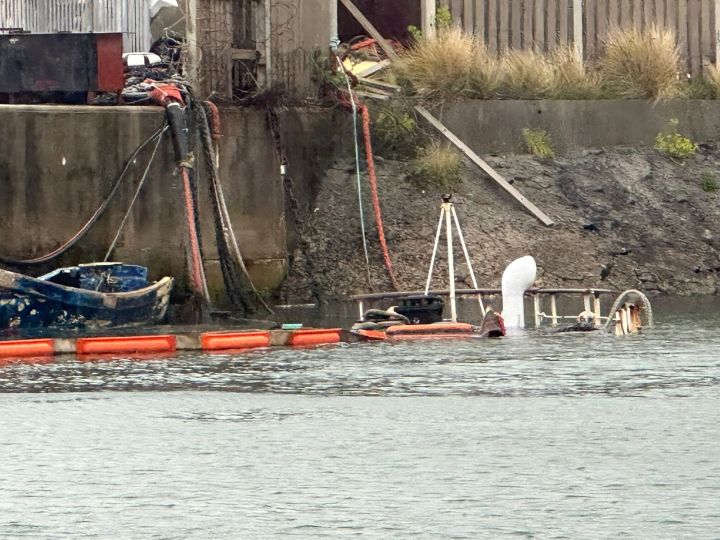
While the resulting oil spill is minimal, SanParks and Sanccob are on alert in case nearby penguin colonies are affected.
On the morning of Monday, 25 September, after an intense weather system hit the Cape at the weekend, the CS Cable Restorer finally sank in Simon’s Town, 79 years after it was built.
The cable ship – decommissioned in 1993 – is under the ownership of seasoned mariner and previous Simon’s Town mayor, Harry Dilley, who has for the past few years been investing funds in its maintenance, cutting it down for scrap and dismantling it after the Simon’s Town Museum could no longer afford it to keep it as a museum.
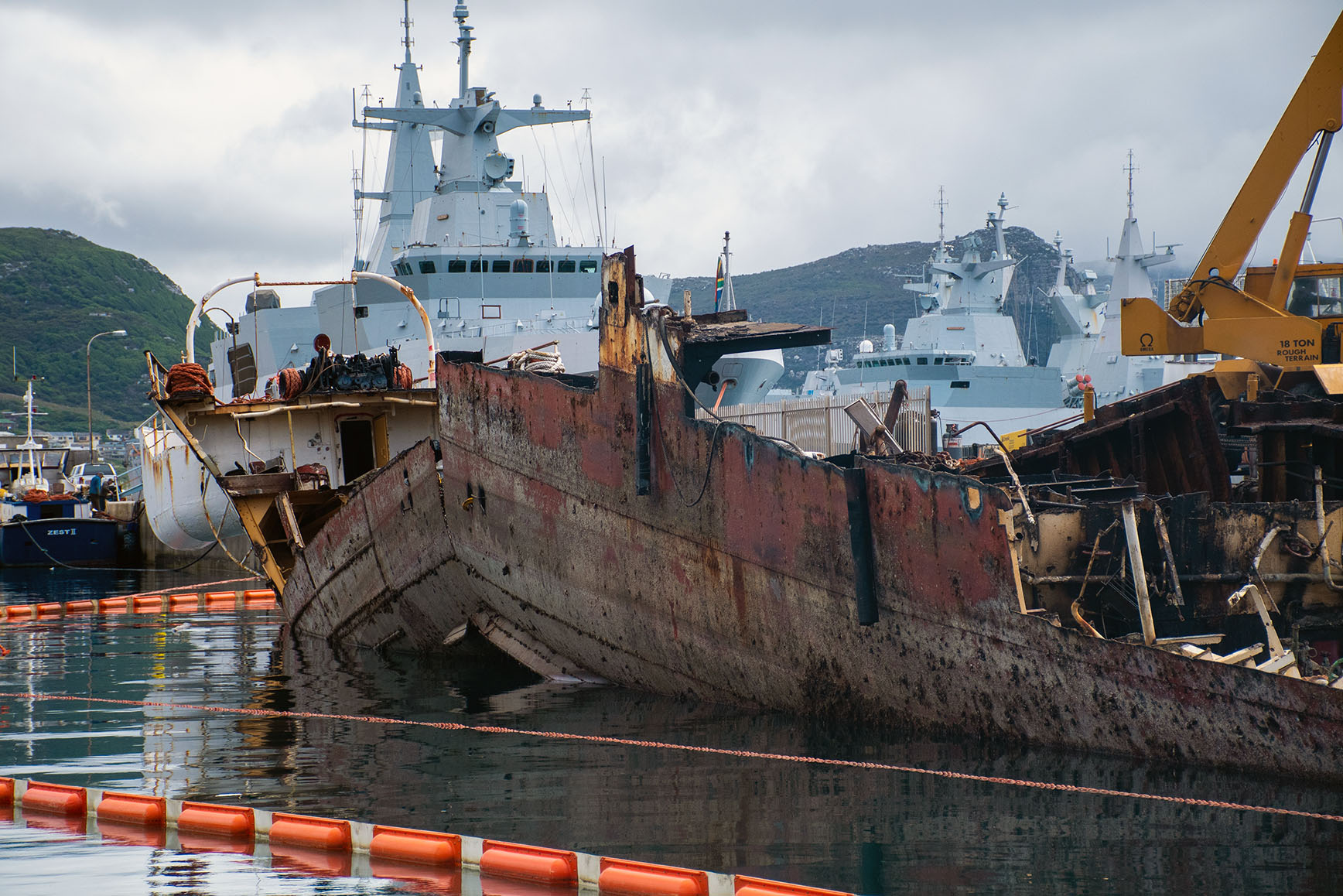
The Cable Restorer in October 2021 — the centre of the ship was cut down to the waterline for scraps, but the bow and stern were still intact. The shell broke in in 2021. (Photo: Julia Evans)
For the past few years, the vessel has been tied to the South African Navy’s Outer West Breakwater, a barrier to protect the inside of the harbour from surge waves. The Navy clarifies the breakwater is outside the Naval Dockyard, close to the False Bay Yacht Club side of Simon’s Town harbour.
“The SA Navy made numerous appeals to the owners of the vessel to have it removed over the last few years,” the SA Navy said on Saturday. “Unfortunately this was never adhered to.”
Dilley and his spokesperson were approached by Daily Maverick several times for comment, but a spokesperson said they would not be able to reply by Daily Maverick’s deadline.
The ship was launched in 1944 as HMS Bullfrog and was used for harbour defence work during World War 2. Renamed the Cable Restorer in 1961, it served commercial companies in the laying and repairing of undersea communications cables.
‘Relatively small’ oil spill
The community has been concerned for years about the ship sinking.
In 2017, Eddie Wesselo, chairperson of the Simon’s Town Museum board of trustees, wrote a letter requesting that the ship be disposed of urgently.
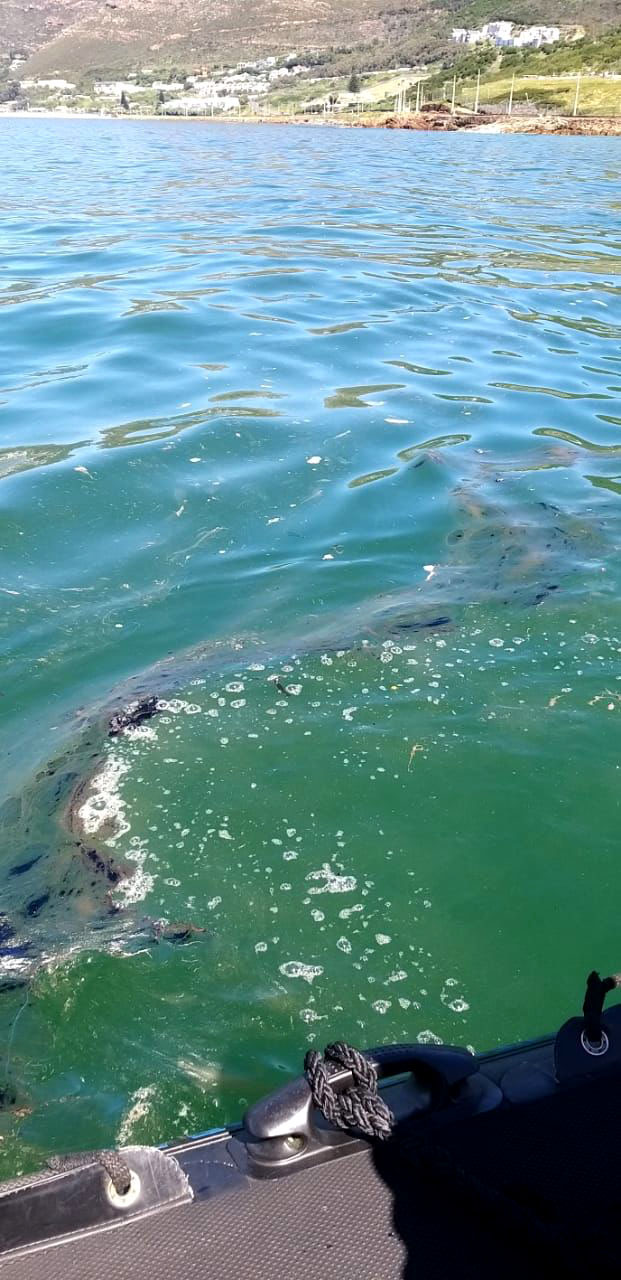
Oil residue on the water surface from the sunken Cable Restorer near Simon’s Town Long Beach on Thursday, 28 September 2023, carried by strong ocean swells and winds. (Photo: Arne Purves)
“Should the ship sink at her moorings (which is not impossible) there would be a major problem with pollution on account of the asbestos, fuel and other substances within her,” Wesselo wrote. “It would be an extremely hazardous situation for both the public and the environment.”
Concerns about the impact the crumbling vessel would have on the marine environment were raised again in 2021 when a red tide coincided with the vessel snapping in two.
After the intense rainfall over the weekend of 23–25 September, with water having collected in the shell of the ship, the vessel finally met its match, sinking in the harbour.
Daily Maverick reported that the Heritage Day long weekend saw more rain in three days than in the previous two months.
The South African Weather Service (Saws) explained that from Saturday night, a cut-off low-pressure system developed along the west coast of South Africa and by Sunday it entered the country’s western interior, causing bursts of intense rainfall, flash flooding, strong winds and very rough seas.
Read more in Daily Maverick: Why more than two months worth of rain fell in Western Cape weekend storm
In 2021, the City of Cape Town’s coastal manager Gregg Oelofse told Daily Maverick that the SA Navy, which had been leading the salvage operation of the ship, informed the city and there was little to no risk of any pollution as almost all the oil had been removed from the vessel.
Katta Ludynia from the Southern African Foundation for the Conservation of Coastal Birds (Sanccob) also said at the time: “There is only a small amount of oil residuals in the boat as the main part has been pumped off.”
But the remaining oil residue stuck in the old ship’s many nooks and crannies leaked into the ocean when it sank on Monday, and the gale-force winds (above 45 knots) and current from the storm system churned up the oil and dispersed parts of it up the coastline.
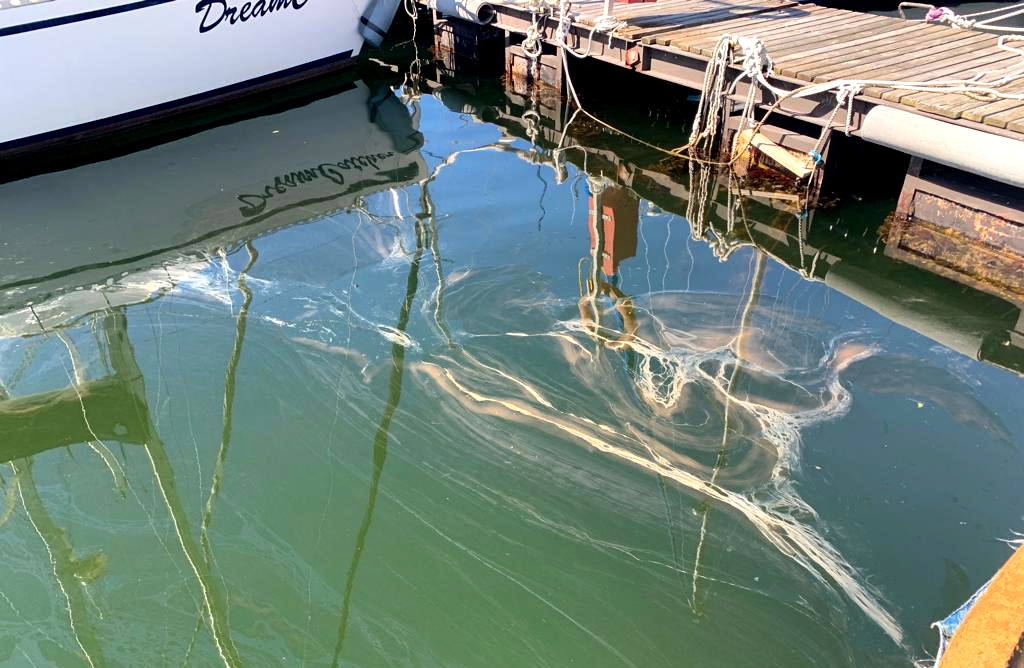
Oil residue on the water surface in the False Bay Yacht Club after the Cable Restorer sank on 25 September 2023. (Photo: Sourced)
The City of Cape Town’s Mayoral Committee Member for Spatial Planning and Environment, Eddie Andrews, confirmed to Daily Maverick that small quantities of old fuel and oil residue leaked into the ocean, which was blown by the strong southeasterly wind on to some of the beaches in False Bay.
Alison Kock, marine biologist at South African National Parks (SANParks), told Daily Maverick that the oil spill was relatively small and the southeasterly wind had pushed it towards Simon’s Town’s Long Beach and northwards to adjacent beaches.
Onlookers said that by the time the Navy’s tugboat was able to investigate, the weather had swept oil outside the borders of the yacht club, meaning they couldn’t put up a pollution boom to stop the oil from escaping the harbour.
Andrews told Daily Maverick that Fish Hoek (on the Clovelly side) and Glencairn beaches had experienced very small amounts of fuel/oil residue washout on Monday and Tuesday, which had not been significant.
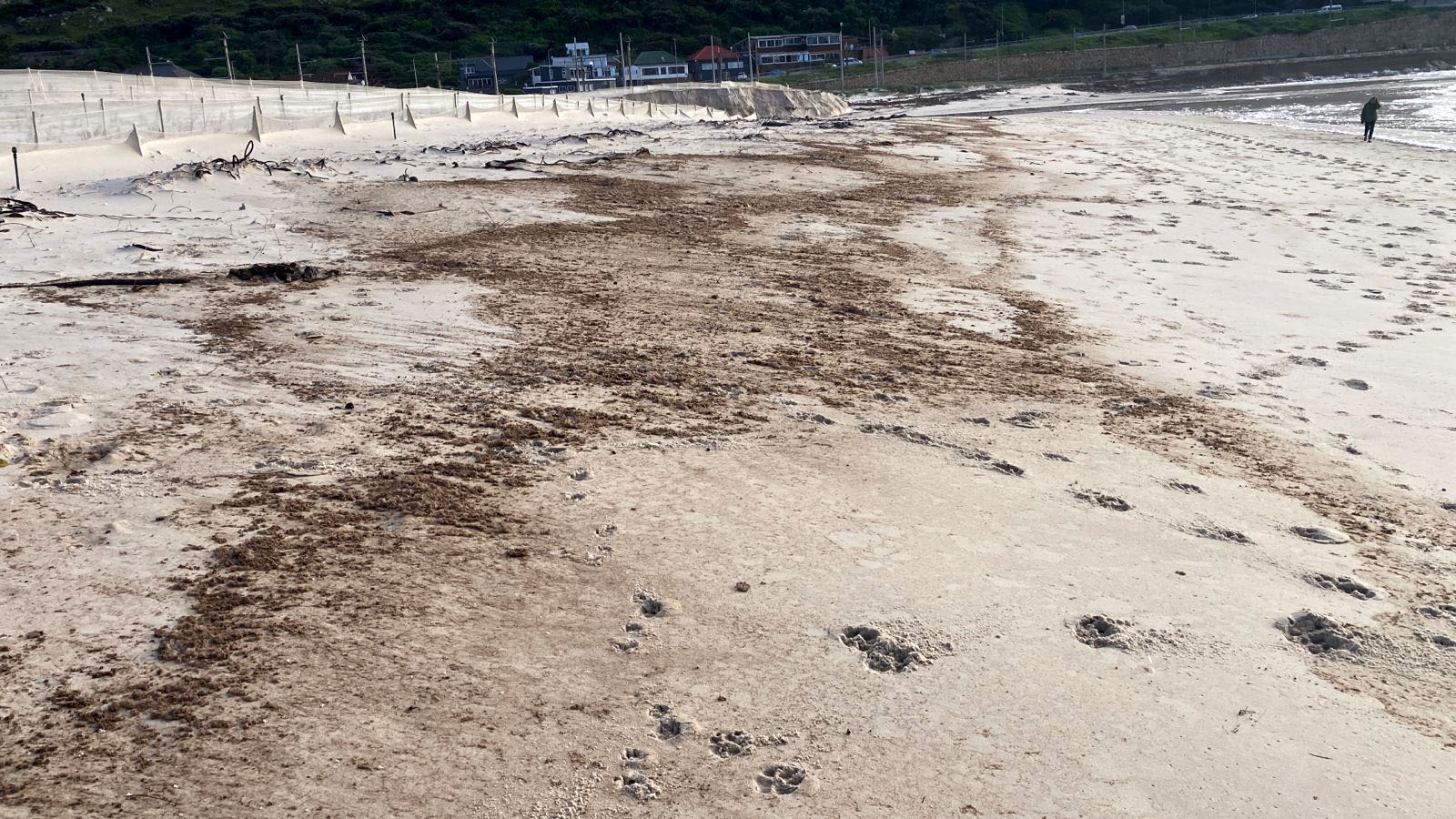
Oil residue washed up on Fish Hoek Beach after swells and strong winds carried oil residue from the sunken Cable Restorer, Tuesday 26 September 2023. (Photo: Arne Purves)
“This has subsequently cleared and the beaches are mostly free from any fuel/oil residue, although small little globules could still be encountered by the public over the coming weeks,” Andrews said.
What about seabirds?
“In general, oil spills pose a significant threat to marine environments and wildlife, ranging from small localised incidents to large catastrophic events with detrimental consequences,” Kock said.
“These spills introduce highly toxic petroleum products containing chemicals like PAHs and heavy metals, disrupting marine life’s reproductive, respiratory and immune systems and leading to long-term damage.
“Moreover, oil spills form surface slicks that coat the bodies of birds, mammals and aquatic organisms, impairing their ability to regulate temperature and buoyancy, increasing the risk of hypothermia and making it difficult for birds to stay afloat.”
Many locals were concerned that this incident would harm the nearby African penguin colony, an already endangered species.
Kock said that, fortunately, no obviously oiled seabirds or marine wildlife had been reported or found to date, and that the SanParks team was on standby to respond to any affected marine life.
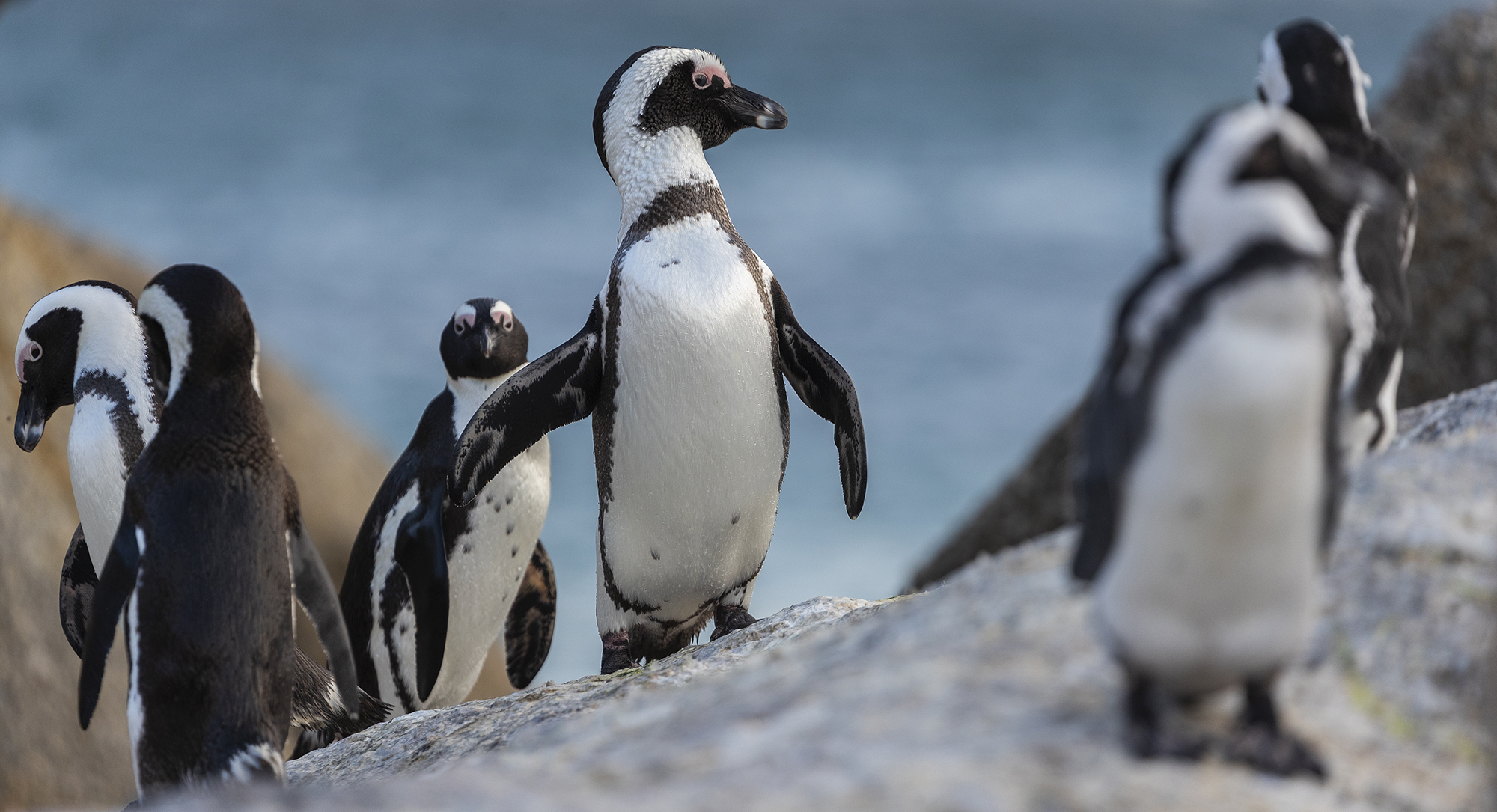
African penguins walk on rocks on Boulders Beach in Simon’s Town. (Photo: EPA-EFE / Nic Bothma)
Monica Stassen, Sanccob’s preparedness and response manager, told Daily Maverick that while no oiled seabirds had been reported to date, “Sanccob remains on standby to receive affected seabirds and is providing support to conservation authorities through area surveillance of the area for any wildlife that may be affected”.
Stassen added: “Oil pollution in the marine environment remains a major concern, especially when it occurs near an endangered African penguin colony.
“This incident serves as a reminder that incidents can occur at any time and directly threaten vulnerable marine species and ecosystems, which is the primary reason why Sanccob maintains 24/7 preparedness.”
Andrews said the City of Cape Town had reported that no birds in distress were found after a comprehensive sweep of the beaches was conducted on Tuesday, 26 September – including the cormorant roosts and penguin breeding areas – and no reports of affected birds were received from the public. However, he said its wildlife response was hampered by the extreme weather conditions and rough seas.
The city and SANParks said they would continue daily to monitor the penguins for any signs of oiled birds, with Sanccob on standby.
Disaster management
“Since the ship was docked in a marine protected area, the SA Navy responded to the incident,” the Navy’s HQ said.
“Containment efforts were made to prevent any oil spills and mitigate their effects on the environment. The containment efforts were successful and yielded positive results. All relevant departments within the City of Cape Town were alerted.”
SANParks and the city activated its oil-spill wildlife response on Monday, 26 September, with Sanccob on standby to receive any oiled seabirds, and assessed the scale of the spill along the coast.
A coastal vessel survey of the inshore zone was conducted on Thursday, 28 September, with the city reporting that only very small globules of oil were detected in a few small areas.
“We don’t expect any large oil impacts,” Andrews said. “The biggest impact of the sinking is the likely loss of water space alongside the harbour wall and inside the FBYC [False Bay Yacht Club] due to the position of the wreck.”
Of the impact of oil spills on the marine environment, Kock added: “The clean-up of oil spills is challenging and costly, with some oil sinking or dispersing in the water, rendering removal difficult.
“Furthermore, it’s crucial to recognise that oil spills are not isolated incidents. Over time, multiple spills can accumulate in the same region, resulting in cumulative impacts on marine ecosystems and wildlife.” DM



















 Become an Insider
Become an Insider
Comments - Please login in order to comment.